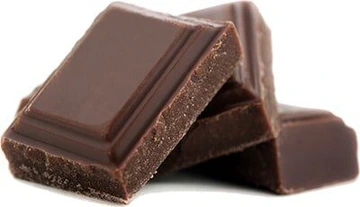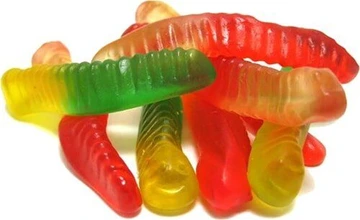BEST and WORST Halloween Candy for Your Teeth


Halloween is a great time to splurge on your favorite treats. But let’s be real: most of us prefer to eat candy year-round. Even though sugar is bad for your tooth enamel, a little candy every now and then isn’t going to wreck your oral health. As they say, “all in moderation!”
However, …
The key to avoiding candy-induced cavities is to limit your exposure time to sugar, as opposed to how much candy you’re actually eating. If you splurge on some sweets every now and then but you’re taking great care of your teeth every other day of the year, you’re probably going to be fine.
All of that being said, here are some of the best (and worst) candies for your teeth if you’re planning on feeding your sweet tooth over Halloween and the upcoming holiday season.

Best Candies For Your Teeth
(aka candy that’s less dangerous to your smile)
1. No Candy (Or At Least Eat It All At Once.)
News flash: the best candy for your teeth is no candy at all. Since the frequency of how often you eat candy and the length of time it spends sitting on your teeth are two of the factors that cause tooth decay, the best way to avoid cavities is avoiding candy altogether.
But who wants to do that?! Instead of randomly snacking on candy here and there throughout the day, the better thing to do is to eat your candy all at once. That way it’s not on your teeth as long. Fair warning: your stomach may hate you.
If you're looking for a little treat, reach for sugar-free gum; it's a smarter choice for your teeth because it won't cause cavities like sugary candies. Sugar-free gum can provide a sweet taste without harming your teeth.
2. Dark Chocolate
If you’re searching for the best candy that does the least damage possible to your teeth, it’s chocolate. Especially dark chocolate, since it has less sugar than milk chocolate. The best thing about chocolate is that it doesn’t stick to your teeth for hours at a time. It’s easy to rinse it off with water or rub it away with your tongue. And since contact time has a lot to do with sugar eating away at your teeth, chocolate is one of the “least bad” treats you can splurge on.

3. Sugar-Free Candy
Sugar-free candies like mints and gums are “less bad” for your tooth enamel. In fact, some types of sugar substitutes — like Xylitol — can actually benefit your oral health by reducing plaque buildup on your teeth. That being said, you need to pace yourself. Ingesting too much candy with artificial sweeteners can cause other issues, like gastrointestinal problems. But as far as your teeth are concerned, they’re a great alternative to other types of candy.

4. Candy Bars With Nuts
Maybe you want something a bit fancier than just a plain piece of chocolate or sugar-free candy. For added texture, go for a candy bar with nuts in it (instead of other sticky stuff like nougat or caramel.) A plain chocolate bar with nuts — like Hershey’s with almonds — is a great example. Nuts are a healthy snack and as long as they’re chopped up into little pieces inside of a chocolate bar, they’re fine for your teeth. The only exception might be if you’re in braces and your orthodontist has totally ruled them totally “off limits.”

Worst Candies For Your Teeth
1. Sticky, Gummy Candy
The absolute WORST candy for your teeth is anything that’s sticky or gooey. Taffy, caramel, gummy worms…you name it. Why? Because those sticky textures are prone to getting stuck down inside of hard-to-reach areas like the tiny grooves on the chewing surfaces of your teeth. No matter how good you’re flossing or brushing, there’s probably going to be some residue that gets left behind. Those grooves are so tiny that even a toothbrush bristle can’t reach down inside of them.
In the grand scheme of things, sticky candy might stay stuck to your tooth for hours — or even days — which equates to more contact time and a higher cavity risk.

2. Sour Candy
Are you in love with sour candies? Maybe Sour Patch Kids, Sour Punch Straws, or those sour gummy worms? Then hold onto your horses. Acidic candy and other types of foods can actually cause erosion to your tooth enamel. As enamel begins to erode (thin out) it’s more prone to tooth decay and temperature sensitivity. And once it gets thin enough, you’ll be more likely to see chipping or breaks in your teeth.

3. Hard Candy And Lollipops
Are lollipops bad for your teeth? YES! You know you’re not supposed to bite into hard candy like “jawbreakers” or lollipops since they could potentially break your teeth. But sometimes people do it instinctively. And by then, it’s too late. If you’ve got an existing cavity or an old filling, your tooth could crack right in half.
But let’s just say for a minute that you are absolutely certain to not bite into a hard candy. No problem, right? WRONG! Hard candies tend to stay in your mouth for a longer amount of time. Remember what we said about sugar exposure when it comes to frequency of exposure and length of time on your teeth? Since hard candies are in your mouth longer, they mix with your saliva and cause sugar to spread all over your mouth.

4. Popcorn Balls


Make your inbox smile!
Subscribe





